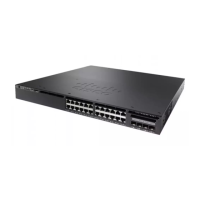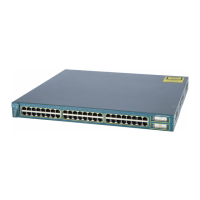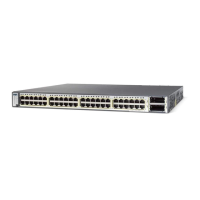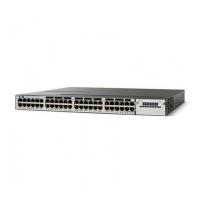PurposeCommand or Action
Specifies the Layer 3 interface on which you want to enable multicast
routing, and enters interface configuration mode.
interface interface-id
Example:
Device(config)# interface
Step 3
The specified interface must be one of the following:
• A routed port—A physical port that has been configured as a Layer
3 port by entering the no switchport interface configuration command.
gigabitethernet 1/0/1
You will also need to enable IP PIM sparse-dense-mode on the
interface, and join the interface as a statically connected member to
an IGMP static group. For a configuration example, see Example:
Interface Configuration as a Routed Port, on page 83.
• An SVI—A VLAN interface created by using the interface vlan
vlan-id global configuration command. You will also need to enable
IP PIM sparse-dense-mode on the VLAN, join the VLAN as a statically
connected member to an IGMP static group, and then enable IGMP
snooping on the VLAN, the IGMP static group, and physical interface.
For a configuration example, see Example: Interface Configuration
as an SVI, on page 83.
These interfaces must have IP addresses assigned to them.
Changes the maximum query response time advertised in IGMP queries.ip igmp query-max-response-time
seconds
Step 4
The default is 10 seconds. The range is 1 to 25.
Example:
Device(config-if)# ip igmp
query-max-response-time 15
Returns to privileged EXEC mode.end
Example:
Device(config-if)# end
Step 5
Verifies your entries.
show ip igmp interface [interface-id]
Example:
Device# show ip igmp interface
Step 6
(Optional) Saves your entries in the configuration file.copy running-config startup-config
Example:
Device# copy running-config
Step 7
startup-config
IP Multicast Routing Configuration Guide, Cisco IOS XE Release 3SE (Catalyst 3650 Switches)
OL-29890-01 43
Configuring IGMP
Changing the Maximum Query Response Time for IGMPv2 (CLI)

